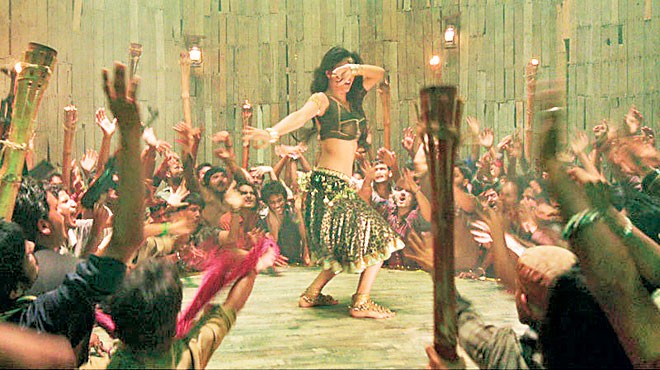
Na Maloom Afraad's music is a chaotic mish-mash of an ounce of soul and a spoonful of noise.

Album: Na Maloom Afraad OST
Rating: **1/2
A mere mention of the words ‘Na Maloom Afraad’ is enough to stir up chaotic, mind-numbing thoughts. Unfortunately, much like the film’s underlying narrative that maps the lives of the three leading men (and Karachiites more realistically), the soundtrack of NMA also suffers the predicament of sheer havoc, which irritates you in the beginning and bores you as it progresses. It’s a harrowing mix of unpleasant or better yet, puzzling sounds. Having said that, there are a handful of songs that are worth listening to and do not test the listener’s patience level.
Composer duo Shani-Kami once again collaborates with renowned lyricist Sabir Zafar (after a lackluster, Bollywood-inspired Main Hoon Shahid Afridi OST). And while the first few tracks may appear to have a redeeming quality, the improvement is unfortunately short lived and temporary. As you move ahead on the playlist, you are better off fast-forwarding.
The opening track of the album is the much-hyped and controversial item song ‘Billi’ featuring a ‘catty’ looking Mehwish Hayat. Item songs have become a highlight of commercial Bollywood cinema and it is obvious that Pakistan’s filmmakers have taken a cue too. Luckily, they have managed to make it work in their favour. The music is catchy and so are the lyrics that cleverly incorporate the essence of the film’s plot i.e. citywide strikes. However, in an attempt to add oomph, Saima Iqbal’s singing comes across as more superficial than naturally seductive.
Next up is a romantic number titled ‘Darbadar’, composed by Vicky and Naqash Haider and sung by Sara Raza. A soulful yet upbeat ballad, it is undoubtedly a feather in the cap of the composers. However, the addition of a subtle qawwali version of the Indian ‘Saanson Ki Maala’, right in the middle of the composition, makes no sense whatsoever. Sara Raza does justice to the melody with her soft but slightly husky voice, however when it comes to pitching high notes, her voice falls flat.
Debutant actor Mohsin Abbas Haider’s ‘Sapno Ki Mala’, on the other hand, is a definite winner. From the musical arrangement with both Eastern (particularly the flute) and Western instruments to Mohsin’s vocal prowess, everything about this song is simply flawless. In case the film doesn’t work, Mohsin will be able to pursue an alternate career in singing!
The highlight of the entire album is, without a doubt, Sajjad Ali’s ‘Phur Phur’. From the minute you hear the first musical beat of the song you know that it’s the one from the album that features the legendary Sajjad Ali. While it’s nowhere near Sajjad Ali’s Coke Studio outing ‘Kir Kir’, the song is an example of why Sajjad Ali remains a relevant singer with his unmatched versatility. His command over his skill set can give any singer a run for his money even today; his vocal prowess is a rare gift from God. The magic of the song lies not so much in Shani and Kami’s composition but in Sajjad’s upbeat, foot-tapping rendition.
The rest of the album is forgettable. Even Azal’s satirical qawwali ‘Manga Tanga’, which seems to have been inspired from Delhi Belly’s ‘Nakkadwaley Disco Uddharwaley Khisko’ in terms of the basic essence, fails to stimulate the senses. An important note to the composers: if you intend to reproduce folklore, it’s best to add an additional element or two in order to make it your own. However, in ‘Mere Neher’s’ case, there is nothing new or awe-inspiring that sets it apart from the original.
Overall, it appears as if there has been an unnecessary enforcement of using satire and comedy in every other song. For a film that aims to cash on its hard-hitting and relatable storyline, the music would have been sufficient with only four to five noteworthy and memorable songs. However, with nine songs out of which four seem repetitive, the albums falls short of being cohesive and instead appears to be a forced effort. While originality is appreciated, some of the music only reaffirms the prevailing rumour that Na Maloom Afraad may be ‘inspired’ by Bollywood’s Delhi Belly, because the underlying feel of the soundtrack sure seems to be.